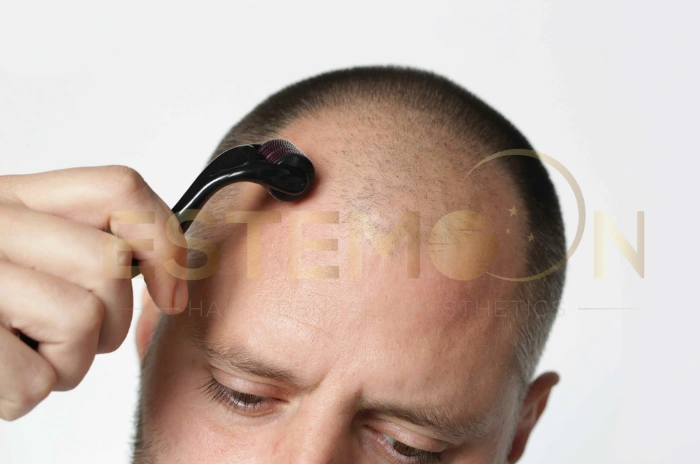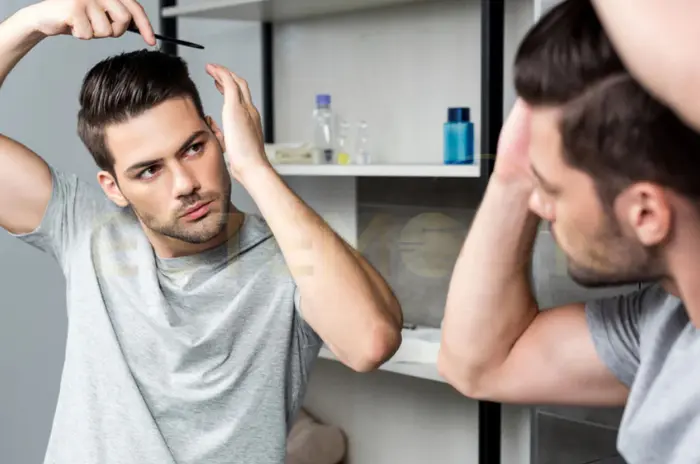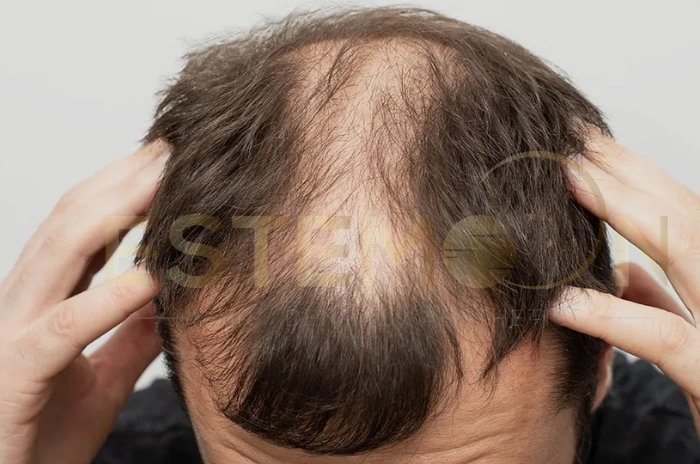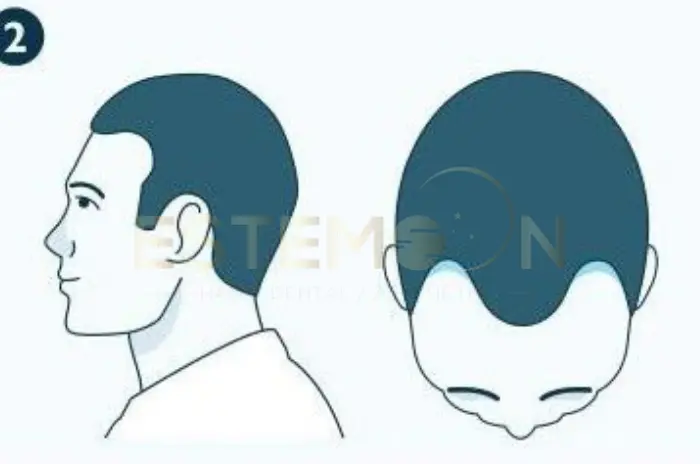Hair loss affects millions of people worldwide, driving them to seek innovative solutions that promise real results. Among the most talked-about treatments today is the combination of dermastamping for hair growth and minoxidil application. This DIY approach has gained significant attention in online communities, with users sharing dramatic before-and-after photos and success stories.
The concept behind microneedling for hair loss combined with minoxidil isn’t entirely new, but its accessibility for at-home use has sparked both excitement and concern among those struggling with hair thinning. While some clinical studies suggest promising results, the question remains: is this combination a scientifically-backed solution or a risky experiment that could do more harm than good?
Understanding the mechanisms, benefits, and potential dangers of minoxidil and dermastamping is crucial before embarking on any DIY hair restoration journey. This comprehensive guide examines the science, safety protocols, and real-world outcomes to help you make an informed decision about this increasingly popular treatment approach.
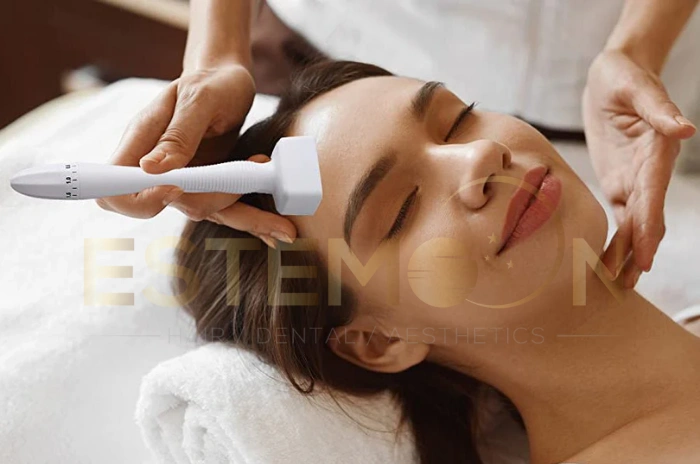
What Is Dermastamping & How Does It Work for Hair Growth?
Dermastamping is a form of microneedling that involves using a small device equipped with multiple fine needles to create controlled micro-injuries in the scalp. Unlike dermarollers that drag across the skin, dermastamps press straight down and lift straight up, potentially reducing the risk of needle damage and ensuring more precise penetration.
The primary mechanism behind dermastamping for hair growth lies in the body’s natural wound healing response. When tiny needles penetrate the scalp, they trigger the release of growth factors, increase blood circulation, and stimulate the production of collagen and other proteins essential for healthy hair follicle function.
The Science Behind Microneedling and Hair Follicle Stimulation
Research indicates that microneedling activates several biological pathways that support hair growth. The micro-injuries created by the needles stimulate the release of platelet-derived growth factor (PDGF), vascular endothelial growth factor (VEGF), and basic fibroblast growth factor (bFGF). These growth factors play crucial roles in angiogenesis, cell proliferation, and tissue repair.
Additionally, the mechanical stimulation from dermastamping may help counteract the effects of dihydrotestosterone (DHT), the hormone primarily responsible for androgenetic alopecia. The increased blood flow and nutrient delivery to hair follicles can potentially reverse miniaturization and extend the anagen (growth) phase of the hair cycle.
The needle size for hair regrowth typically ranges from 0.5mm to 1.5mm, with most experts recommending 1.0-1.5mm for optimal results. Deeper penetration allows for better stimulation of the dermal papilla, the structure at the base of hair follicles that controls hair growth.
Dermastamping vs. Dermarolling: Which Is Better for Hair Regrowth?
When comparing dermaroller vs dermastamp for hair loss treatment, several key differences emerge. Dermastamps create vertical needle punctures that heal more quickly and uniformly, while dermarollers can create angled wounds as the device rolls across the scalp surface.
| Feature | Dermastamp | Dermaroller |
|---|---|---|
| Needle penetration | Vertical (90°) | Angled (15-45°) |
| Precision | High – targeted areas | Moderate – broader coverage |
| Healing time | 24-48 hours | 48-72 hours |
| Pain level | Low to moderate | Moderate to high |
| Risk of needle damage | Low | Higher due to rolling motion |
| Coverage speed | Slower | Faster for large areas |
| Best for | Specific bald spots | Diffuse thinning |
| Cost | $15-40 | $10-30 |
Dermastamping offers better precision and control, allowing users to target specific areas of hair loss more effectively. The vertical penetration pattern also reduces the risk of needle breakage and ensures consistent depth across the treatment area. Many users report less discomfort and faster healing times with dermastamps compared to dermarollers.
Minoxidil for Hair Loss: How It Works
Minoxidil remains one of the most widely used and clinically proven treatments for hair loss. Originally developed as a blood pressure medication, its hair growth properties were discovered as a side effect, leading to its FDA approval for androgenetic alopecia treatment.
The mechanism of action involves minoxidil’s ability to dilate blood vessels in the scalp, increasing nutrient and oxygen delivery to hair follicles. It also extends the anagen phase of the hair cycle and may counteract some effects of DHT on follicle miniaturization.
Minoxidil is available in various concentrations, with 2% and 5% being the most common formulations. The medication can be found in both liquid and foam preparations, each offering distinct advantages for different users and scalp conditions.
Does Minoxidil Alone Regrow Hair?
Clinical studies demonstrate that minoxidil alone can produce significant hair regrowth in many users, particularly those in early stages of hair loss. Research shows that approximately 60-70% of users experience some degree of hair regrowth or slowed hair loss progression when using minoxidil consistently.
However, minoxidil’s effectiveness varies considerably among individuals. Factors such as age, extent of hair loss, genetic predisposition, and consistency of use all influence treatment outcomes. Some users may see dramatic improvements within 3-6 months, while others may experience only modest benefits or require longer treatment periods.
The medication works best on crown thinning and may be less effective for frontal hairline recession. Minoxidil side effects can include scalp irritation, unwanted facial hair growth in women, and initial hair shedding as the follicles reset their growth cycles.
DIY Dermastamping + Minoxidil: Does It Really Work?
The combination of DIY microneedling hair treatment with minoxidil has gained significant attention due to promising research and user testimonials. The theory suggests that microneedling creates micro-channels in the scalp that enhance minoxidil absorption while simultaneously providing the growth factor stimulation benefits of controlled injury.
Several users report accelerated hair growth, increased hair density, and improved response to minoxidil when combined with regular dermastamping sessions. The synergistic effect appears to address multiple aspects of hair loss simultaneously, potentially offering superior results compared to either treatment alone.
However, individual responses vary significantly, and not all users experience the dramatic improvements often showcased in online forums. Factors such as needle depth, frequency of treatment, minoxidil concentration, and individual scalp sensitivity all influence outcomes.
Clinical Studies Supporting Microneedling + Minoxidil
Microneedling and minoxidil clinical studies provide encouraging evidence for the combination approach. A landmark 2013 study published in the International Journal of Trichology found that men receiving weekly 1.5mm microneedling sessions plus 5% minoxidil showed significantly greater hair regrowth compared to those using minoxidil alone.
| Study Details | Combination Group | Minoxidil Only |
|---|---|---|
| Hair count increase | 91.4 hairs/cm² | 22.2 hairs/cm² |
| Treatment duration | 12 weeks | 12 weeks |
| Patient satisfaction | 82% very satisfied | 38% very satisfied |
| Side effects | Mild scalp irritation | Minimal |
| Improvement rate | 4x greater | Baseline |
The study participants in the combination group achieved an average hair count increase of 91.4 hairs per cm², while the minoxidil-only group saw an increase of just 22.2 hairs per cm². These results suggest that microneedling can enhance minoxidil efficacy by up to 4 times in some individuals.
Subsequent research has supported these findings, with studies showing improved minoxidil penetration, enhanced follicle stimulation, and better overall treatment outcomes when dermastamping or other microneedling techniques are incorporated into hair loss treatment protocols.
User Before & After Results (Success Stories & Failures)
Dermastamp hair growth before and after photos shared in online communities often show remarkable improvements, with users documenting significant increases in hair density and coverage over 6-12 month periods. Many report seeing initial results within 2-3 months of starting the combination treatment.
Success stories frequently mention improved hair thickness, reduced scalp visibility, and regrowth in previously bald areas. Some users credit the combination with stopping or reversing years of progressive hair loss, particularly when started in early stages of androgenetic alopecia.
However, failure cases also exist, with some users experiencing increased scalp sensitivity, persistent irritation, or minimal improvement despite consistent treatment. A subset of users report initial shedding that doesn’t resolve or worsening of hair loss patterns, highlighting the importance of proper technique and realistic expectations.
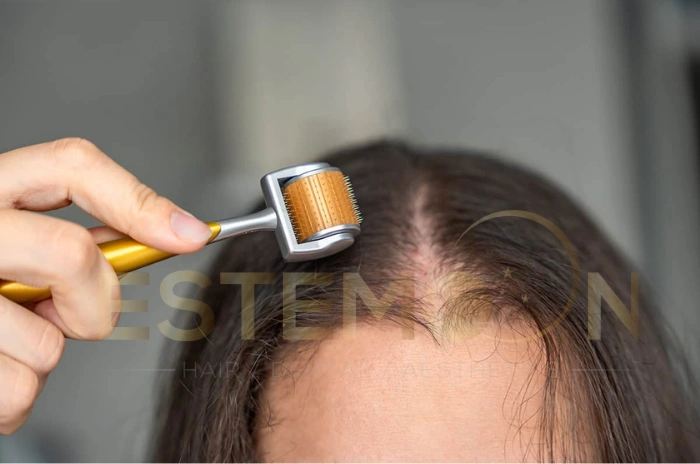
How to Safely Combine Dermastamping & Minoxidil at Home
Safety represents the most critical aspect of DIY dermastamping combined with minoxidil application. Proper technique, sterilization protocols, and appropriate timing between treatments are essential for maximizing benefits while minimizing risks of infection, scarring, or other complications.
The key to successful treatment lies in understanding the optimal parameters for both components and how they interact when used together. This includes selecting appropriate needle depths, determining treatment frequency, and timing minoxidil application relative to dermastamping sessions.
Step-by-Step DIY Guide (Needle Size, Frequency, Technique)
How to use dermastamp with minoxidil requires careful attention to detail and consistent execution. Begin by selecting an appropriate dermastamping needle size for hair – typically 1.0-1.5mm for optimal follicle stimulation without excessive tissue damage.
Step-by-step dermastamping for hair loss protocol:
- Cleanse the scalp thoroughly with antibacterial soap or shampoo
- Sterilize the dermastamp using 70% isopropyl alcohol for at least 10 minutes
- Section the hair to expose the treatment areas clearly
- Apply gentle, perpendicular pressure with the dermastamp for 1-2 seconds per application
- Move systematically across the treatment area with slight overlapping
- Complete the session within 10-15 minutes to minimize trauma
- Apply a soothing, alcohol-free moisturizer to calm the scalp
- Wait 24 hours before applying minoxidil to allow initial healing
Dermastamping frequency should typically be once per week, allowing adequate healing time between sessions. More frequent treatments can lead to chronic inflammation and potentially counterproductive results.
Best Minoxidil to Use After Dermastamping (Liquid vs. Foam)
The choice between liquid and foam minoxidil formulations can significantly impact treatment outcomes when combined with dermastamping. Liquid minoxidil generally provides better penetration through the micro-channels created by needling, potentially enhancing absorption and efficacy.
However, foam formulations may be better tolerated by sensitive scalps, particularly following microneedling sessions. The foam’s gentler application and reduced propylene glycol content can minimize irritation and burning sensations that some users experience with liquid formulations post-treatment.
Consider starting with lower concentrations (2-3%) immediately after introducing dermastamping to assess tolerance before progressing to stronger formulations. Some users alternate between liquid and foam based on scalp sensitivity following each dermastamping session.
Post-Treatment Care (Avoiding Irritation & Infection)
Proper post-treatment care is crucial for preventing complications and optimizing healing. Keep the scalp clean and dry for the first 24 hours following dermastamping, avoiding excessive sweating, swimming, or exposure to contaminants.
Monitor for signs of infection including persistent redness, warmth, swelling, or discharge from needle sites. Apply gentle, fragrance-free moisturizers to prevent excessive dryness and scaling during the healing process.
Avoid harsh chemical treatments, tight hairstyles, or aggressive brushing for 48-72 hours post-treatment. Sun protection becomes particularly important as the treated scalp may be more sensitive to UV damage during the healing period.
Risks & Side Effects of DIY Dermastamping + Minoxidil
Understanding potential risks and side effects is crucial before beginning any DIY dermastamping regimen. While many users tolerate the combination well, serious complications can occur, particularly when proper protocols aren’t followed or when individuals have underlying scalp conditions.
Dermastamping + minoxidil side effects can range from mild irritation to serious infections requiring medical intervention. Being aware of these risks allows for informed decision-making and early recognition of problems that require professional attention.
Can Microneedling Increase Minoxidil Side Effects?
Can microneedling cause hair shedding? is a common concern, as the combination treatment can initially increase hair shedding as follicles reset their growth cycles. This temporary shedding typically resolves within 2-4 weeks but can be alarming for new users.
Microneedling can potentially increase systemic absorption of minoxidil, leading to enhanced side effects such as dizziness, rapid heartbeat, or unwanted hair growth in other body areas. The micro-channels created by needling allow for deeper penetration of topical medications, effectively increasing their bioavailability.
Some users report intensified scalp irritation, burning sensations, or contact dermatitis when combining treatments. Minoxidil overdose symptoms microneedling can include severe scalp inflammation, systemic cardiovascular effects, or allergic reactions requiring immediate medical attention.
Infection Risk & How to Sterilize Your Dermastamp
How to sanitize a dermastamp properly is essential for preventing bacterial, fungal, or viral infections. Inadequate sterilization represents one of the most serious risks of DIY microneedling, potentially leading to cellulitis, abscess formation, or transmission of bloodborne pathogens.
Proper sterilization protocol involves soaking the dermastamp in 70% isopropyl alcohol for at least 10 minutes before and after each use. Some experts recommend additional sterilization using UV light or autoclave methods when available.
Replace dermastamps regularly, as repeated use can dull needles and create irregular punctures that heal poorly. Never share dermastamps between individuals, and consider the device contaminated if it contacts any non-sterile surface during treatment.
Signs You Should Stop & See a Dermatologist
Is DIY microneedling safe for hair loss? depends largely on proper execution and individual factors. Certain warning signs indicate the need to discontinue treatment and seek professional evaluation immediately.
Stop treatment and consult a dermatologist if you experience persistent bleeding beyond 24 hours, signs of infection (fever, spreading redness, warm tender areas), severe allergic reactions, or worsening hair loss patterns. Additionally, chronic scalp pain, formation of scars or keloids, or systemic symptoms following treatment warrant professional assessment.
Consider professional consultation before starting treatment if you have active scalp conditions, take blood-thinning medications, have a history of keloid formation, or are immunocompromised. These factors may significantly increase complication risks and require modified treatment approaches.

Alternatives to DIY Dermastamping + Minoxidil
While DIY dermastamping combined with minoxidil offers an accessible treatment option, several alternatives exist for those seeking professional guidance or different therapeutic approaches. Understanding these options helps individuals make informed decisions based on their specific needs, risk tolerance, and budget considerations.
Professional treatments often provide superior safety profiles and potentially better outcomes, while other hair growth treatments may offer different mechanisms of action or better suitability for specific types of hair loss.
Professional Microneedling vs. At-Home Treatment
Professional microneedling vs. at-home treatment presents distinct advantages and disadvantages. Professional treatments typically use deeper needle penetration (1.5-2.5mm), sterile conditions, and combination therapies such as platelet-rich plasma (PRP) or growth factor serums.
Dermatologists and trained practitioners can adjust treatment parameters based on individual scalp conditions, hair loss patterns, and treatment response. Professional settings also provide immediate management of complications and access to prescription-strength topical treatments not available for home use.
However, professional treatments require significantly higher financial investment, multiple clinic visits, and scheduling constraints. The cost-effectiveness of professional microneedling must be weighed against the convenience and affordability of carefully executed home treatments.
Other Hair Growth Treatments
Alternative hair growth treatments include oral medications like finasteride or dutasteride, which target DHT production directly. These systemic treatments can be particularly effective for androgenetic alopecia but carry their own side effect profiles and contraindications.
Low-level laser therapy (LLLT) offers a non-invasive option that stimulates hair follicles through photobiomodulation. While evidence for LLLT effectiveness remains mixed, some users report positive results when combined with other treatments.
Hair transplantation represents the most definitive treatment for advanced hair loss, though it requires surgical intervention and significant financial investment. Newer techniques like follicular unit extraction (FUE) offer improved outcomes with reduced scarring compared to traditional methods.
The Science Behind the Combo
Understanding the scientific mechanisms underlying the dermastamping and minoxidil combination provides insight into why this treatment approach shows promise and how to optimize its effectiveness. The synergistic effects operate through multiple pathways that address different aspects of hair loss simultaneously.
Research continues to elucidate the complex interactions between mechanical stimulation, topical medication delivery, and cellular responses that contribute to improved hair growth outcomes when these treatments are combined.
Clinical studies on microneedling + minoxidil
Multiple clinical studies on microneedling + minoxidil have demonstrated superior outcomes compared to minoxidil monotherapy. The foundational 2013 study by Dhurat et al. established the benchmark for combination treatment efficacy, showing remarkable improvements in hair count and patient satisfaction scores.
Subsequent research has confirmed these findings across different populations and treatment protocols. A 2017 study published in the Journal of Cutaneous and Aesthetic Surgery found that patients receiving combination therapy achieved 50% greater hair density improvements compared to minoxidil alone.
More recent investigations have explored optimal needle depths, treatment frequencies, and minoxidil concentrations for maximizing therapeutic outcomes. These studies consistently show enhanced follicular penetration of minoxidil and improved growth factor expression when microneedling is incorporated into treatment protocols.
Synergistic mechanisms (absorption, growth factors)
The synergistic mechanisms between dermastamping and minoxidil operate through enhanced drug delivery and complementary biological pathways. Microneedling creates temporary micro-channels that significantly increase minoxidil penetration into deeper skin layers where hair follicles reside.
Additionally, the mechanical stimulation from needling triggers release of endogenous growth factors including PDGF, VEGF, and IGF-1. These factors work synergistically with minoxidil’s vasodilatory effects to create an optimal environment for hair follicle regeneration and growth.
The wound healing response initiated by dermastamping also stimulates stem cell activation in the hair follicle bulge region, potentially reversing follicular miniaturization and extending the anagen phase beyond what either treatment could achieve alone.
Optimal needle length and timing protocols
Research suggests that optimal needle length for combination therapy ranges from 1.0-1.5mm, providing adequate dermal penetration without excessive trauma. Deeper needling (1.5mm) may offer superior growth factor stimulation but requires longer healing intervals and carries higher complication risks.
Timing protocols typically recommend weekly dermastamping sessions with minoxidil application resuming 24 hours post-treatment. This schedule allows for initial healing while maintaining consistent minoxidil levels and avoiding excessive scalp trauma from too-frequent needling.
Some practitioners advocate for twice-weekly shorter needling sessions (0.5-1.0mm) combined with daily minoxidil application, though evidence supporting this approach remains limited compared to the standard weekly protocol established in clinical trials.
Benefits of DIY Dermastamping + Minoxidil
The documented benefits of combining DIY dermastamping with minoxidil extend beyond simple hair regrowth to include improvements in hair quality, scalp health, and treatment satisfaction. Understanding these benefits helps set realistic expectations and provides motivation for consistent treatment adherence.
Clinical evidence and user reports consistently demonstrate multiple advantages of combination therapy over either treatment modality alone, making it an attractive option for individuals seeking enhanced hair restoration outcomes.
Improved minoxidil delivery through micro‑channels
Improved minoxidil delivery through micro‑channels represents one of the most significant advantages of combination therapy. Studies show that dermastamping can increase minoxidil penetration by up to 80% compared to application on intact skin, dramatically enhancing the medication’s bioavailability at follicular targets.
The temporary micro-channels created by needling bypass the stratum corneum barrier that normally limits topical drug penetration. This enhanced delivery allows for potentially lower minoxidil concentrations to achieve therapeutic effects, reducing systemic side effects while maintaining efficacy.
Research indicates that enhanced drug delivery persists for 24-48 hours following microneedling, providing an extended window for improved minoxidil absorption. This prolonged enhancement helps optimize treatment outcomes while maintaining practical treatment schedules.
Enhanced scalp blood flow & collagen stimulation
Enhanced scalp blood flow & collagen stimulation provides fundamental improvements in the hair growth environment. Dermastamping triggers angiogenesis and neovascularization, increasing nutrient and oxygen delivery to previously compromised hair follicles.
The mechanical stimulation also promotes collagen synthesis and dermal thickness improvements, potentially reversing some age-related changes that contribute to hair follicle miniaturization. Enhanced collagen production strengthens the follicular anchoring system and improves overall scalp health.
Users frequently report improvements in scalp condition including reduced dryness, improved flexibility, and better overall hair quality. These changes suggest that combination therapy provides benefits beyond simple hair regrowth by addressing underlying scalp health issues.
Supporting data: growth rates and hair count improvements
Supporting data from clinical trials consistently demonstrates superior growth rates and hair count improvements with combination therapy. The landmark Dhurat study showed average hair count increases of 91.4 hairs/cm² in the combination group versus 22.2 hairs/cm² with minoxidil alone.
Additional research has reported improved hair shaft diameter, increased anagen phase duration, and enhanced patient satisfaction scores when dermastamping is combined with minoxidil therapy. These improvements typically become apparent within 12-16 weeks of consistent treatment.
Long-term follow-up studies suggest that combination therapy may provide more sustained improvements compared to minoxidil monotherapy, with some patients maintaining gains for extended periods even after treatment discontinuation.
When to See a Professional
Recognizing when to transition from DIY treatment to professional care is crucial for both safety and optimal outcomes. While many individuals can safely perform dermastamping at home, certain situations warrant expert evaluation and potentially more advanced treatment approaches.
Professional consultation can provide valuable guidance on treatment optimization, safety protocols, and alternative therapeutic options that may be more suitable for specific individual circumstances.
For deeper microneedling or PRP combo
For deeper microneedling or PRP combo treatments, professional supervision becomes essential due to increased complexity and complication risks. Deeper needling (>1.5mm) requires sterile conditions, appropriate anesthesia, and expert technique to avoid permanent scarring or other complications.
Platelet-rich plasma (PRP) combination therapy offers enhanced growth factor delivery but requires proper blood processing, sterile handling, and professional injection techniques. These treatments cannot be safely replicated in home settings and require specialized training and equipment.
Professional settings also provide access to advanced topical treatments, growth factor serums, and combination protocols that can enhance treatment outcomes beyond what is achievable with standard DIY approaches.
Red flags: persistent bleeding, rash, infection
Red flags indicating need for immediate professional evaluation include persistent bleeding beyond 24 hours, spreading rash or allergic reactions, and signs of bacterial or fungal infection. These complications can progress rapidly and may require prescription medications or surgical intervention.
Other warning signs include formation of scars or keloids, chronic pain or tenderness, worsening hair loss patterns, or systemic symptoms following treatment. Early professional intervention can prevent progression to more serious complications requiring extensive treatment.
Individuals with compromised immune systems, bleeding disorders, or active scalp conditions should seek professional guidance before attempting any DIY microneedling protocols to ensure safe and appropriate treatment modifications.
DIY vs Professional Treatment Comparison
Understanding the trade-offs between DIY and professional treatment approaches helps individuals make informed decisions based on their specific circumstances, goals, and risk tolerance. Both approaches offer distinct advantages and limitations that must be carefully considered.
The decision often depends on factors including budget constraints, convenience requirements, risk tolerance, and desired treatment intensity or complexity.
Cost, convenience & effectiveness
Cost, convenience & effectiveness represent the primary considerations when comparing treatment approaches. DIY dermastamping with minoxidil typically costs $50-100 initially for equipment plus ongoing minoxidil expenses, making it highly cost-effective compared to professional treatments.
Professional microneedling sessions can cost $150-400 per treatment, with recommended frequencies requiring significant financial investment over time. However, professional treatments may achieve results more quickly or effectively, potentially providing better long-term value despite higher upfront costs.
Convenience strongly favors DIY approaches, allowing treatment scheduling flexibility and eliminating travel time or appointment constraints. Home treatment also provides privacy advantages for individuals uncomfortable with clinical settings or appearance concerns during active treatment phases.
Safety considerations and risk mitigation
Safety considerations and risk mitigation present the strongest arguments for professional treatment, particularly for individuals with limited medical knowledge or manual dexterity. Professional settings provide sterile conditions, emergency management capabilities, and expert assessment of treatment response and complications.
However, carefully executed DIY protocols can achieve excellent safety profiles when proper sterilization, technique, and monitoring protocols are followed. The key lies in education, preparation, and realistic assessment of individual capabilities and risk factors.
Risk mitigation strategies for DIY treatment include starting with conservative parameters, maintaining detailed treatment logs, establishing clear stopping criteria, and developing relationships with dermatology professionals for consultation when needed.
FAQs About DIY Dermastamping and Minoxidil for Hair Growth – Science or Risk?
Is it safe to use a dermastamp and minoxidil at home?
When proper sterilization protocols and appropriate technique are followed, home use of dermastamping with minoxidil can be relatively safe for most individuals.
What needle size should I use for dermastamping on my scalp?
Dermastamping needle size for hair should typically be 1.0-1.5mm for optimal follicle stimulation without excessive tissue trauma.
How often should I use a dermastamp with minoxidil?
Dermastamping should be performed once weekly, with minoxidil application resuming 24 hours after each needling session to allow initial healing.
Can dermastamping increase the side effects of minoxidil?
Yes, dermastamping can enhance minoxidil absorption and potentially increase both therapeutic effects and side effects including scalp irritation and systemic symptoms.
How do I clean and sterilize my dermastamp?
Soak the dermastamp in 70% isopropyl alcohol for at least 10 minutes before and after each use, and replace regularly to maintain needle sharpness.
Should I use liquid minoxidil or foam minoxidil after dermastamping?
Liquid minoxidil generally provides better penetration through micro-channels, though foam may be better tolerated by sensitive scalps following microneedling.
What are the signs that I should stop and see a professional?
Stop treatment and seek professional care if you experience persistent bleeding, signs of infection, severe allergic reactions, or worsening hair loss patterns.
Does the combination of microneedling and minoxidil actually work, according to science?
Clinical studies demonstrate that microneedling and minoxidil combination therapy produces significantly superior hair regrowth compared to minoxidil alone, with some studies showing 4x greater effectiveness.
Follow us on social media for updates, tips, and patient success stories:

